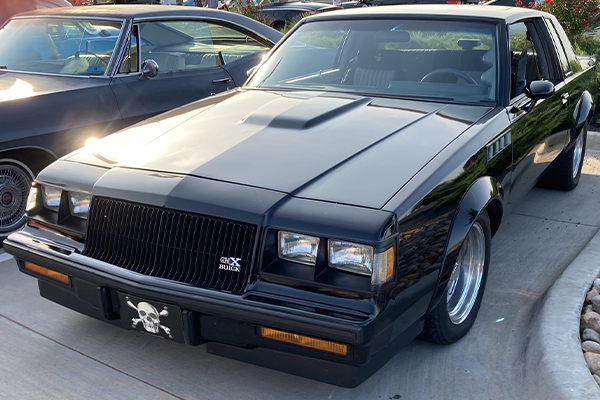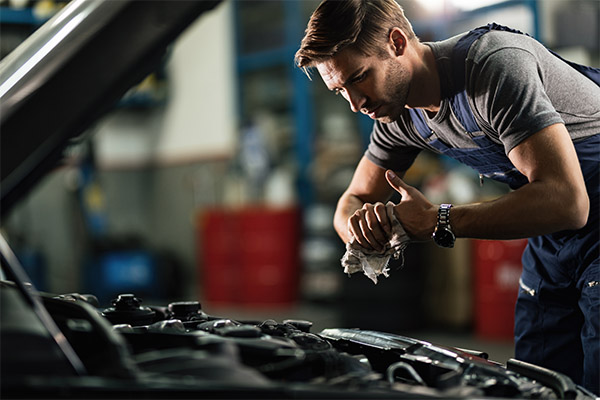Buying a "new" used car is always a bit of a gamble, but the good news is that, thanks to improvements in design, manufacturing, machining, build quality, and metallurgy, there are plenty of used cars with 150,000 miles (or more) on the odometer and plenty of good miles left to go.
When you're buying a used car, especially one with high mileage, you should choose carefully and have a trained mechanic give it a good inspection before you buy.
Of course, you know to check out things like the headlights and taillights, A/C, and the radio/entertainment system. But here are some extra steps you can take to vet the vehicle yourself.
Visual Inspection
- Get a good look at the condition of the gas pedal, brake pedal, carpeting, headliner, and upholstery. A worn and ratty interior is often a sign of a vehicle that hasn't been maintained well.
- Make sure that essential tools aren't missing, like the owner's manual, spare tire, and tire tools. If the car is a newer vehicle and uses a tow hook that screws into the vehicle, confirm that is there. Some vehicles don't use gas caps anymore, and those vehicles will require a special funnel if adding fuel from a can or fuel additives. Make sure that funnel is still stored in the vehicle.
- When examining the body, look for body panels that don't quite match the color of the rest, panels that don't line up or an "orange peel" texture to the paint, all of which could indicate collision damage. Also, place your head right up against the body and eyeball it carefully to look for ripples or irregularities in the sheet metal. The gaps between body panels (i.e., hood and fenders) should be close and even. Also, don't forget to look closely along the bottoms of each body panel and door for signs of rust.
- Inspect the front tires for uneven wear at the inside or outside edge, which could mean alignment problems. Run your hand along the surface of the tread, lightly; a jagged, sawtooth contour to the treads or an uneven "cupped" pattern are also indicators of suspension problems.
Raise the Hood
- Inspect the motor oil on the dipstick—it should be honey colored and translucent. Dirty oil that's the color of black coffee and has an acrid or sour smell could mean the vehicle has been poorly maintained. Learn more about what your motor oil can tell you here.
- While you're under the hood, look for leaks of oil or coolant and any shiny new parts that may have been recently replaced. Coolant should be bright in color and brake fluid should be translucent yellowish and not contaminated. Learn how to check essential fluids here.
- Inspect the transmission fluid—it should be red and translucent. Transmission fluid that's darker in color or has a burnt-toast smell means a vehicle that's been run hard, with an overheated and poorly maintained transmission.
Test Drive
- When you test drive the vehicle, listen for clunks when you put the transmission in gear or let off the gas. A clunk could mean U-joint problems or CV joint or motor mount issues with a front-wheel-drive vehicle. If it's a FWD vehicle, roll the windows down and make a hard turn at slow speed, listening for clicking noises that could indicate a CV joint about to fail. Inspect the rear side of the wheels for oil spatters that could also point to a CV joint problem.
- Drive on a highway if possible, paying attention to the feel of the ride. Are there vibrations at certain speeds, either in the steering wheel or in your seat? If so, you may have a tire balance issue or - less commonly - a problem somewhere else in the drivetrain.
- As you increase and decrease your speed, note the shifts. They should be smooth, not jerky. Transmission problems can be costly, so pay attention to any warning signs the vehicle might be giving you.
- Find a safe place and do a hard stop from 40 mph. Does the vehicle stop in a straight line, or does it pull to one side, pulsate, or lock up any of the wheels?
- Check for front-end wear. Jack up the front end and grasp a front wheel at the top and bottom. Check to see if there's any play when you try to move the wheel; play could indicate worn ball joints or wheel bearing. Do the same while grasping the wheel at the sides; excessive play means worn tie rods, idler arm or Pitman arm. Spin the wheel and listen for clicking or ratcheting noises, which could indicate a wheel bearing problem.
Next Steps after Purchase
Good for you! Everything checked out on your new used car, the mechanic gave it a clean bill of health, and you agreed on a price with the seller. Now, let's keep that high-mileage (and presumably out-of-warranty) vehicle running longer:
- Switch to synthetic motor oil. For years, there were rumors that switching to full synthetic in a high-mileage engine would cause leaks as the oil migrated past old, dried-out, shrunken seals and gaskets. No longer the case—newer formulations of synthetic oil won't leak and provide superior, sludge-free engine protection at all temperatures. While it has come down considerably in price, synthetic oil is still a bit higher than conventional oil, but that extra cost is offset by a longer oil change interval.
- Change the transmission fluid, being sure to select the right formulation for your vehicle. Using the wrong brand-specific fluid can quickly destroy a transmission. If the fluid hasn't been changed in a long time, though, consult with a transmission specialist before flushing the unit. Many technicians will recommend leaving old fluid in place if the transmission has many miles on it and service hasn't been performed in a long time. Learn more about how to extend your transmission's life here.
- Rotate the tires. Tire rotations help ensure even wear of all four tires (and is mandatory for your tire warranty), but regular tire rotations also make a big difference in the vehicle's drivability, handling, and road manners. Learn how to rotate your tires here.
- Wash and wax the car. It's more than just keeping your car looking sharp—a good coat of wax will help prevent the finish from being oxidized from the sun's UV rays and will also help protect against nicks and dings from gravel or road grit.
Just following these simple maintenance steps (along with sensible driving habits) will keep your used car running well for a long time to come. Don't forget, though, to be aware of any weird smells or noises that your vehicle might make down the line. Maintenance is an ongoing need, and heading off any problem at Stage 1 is far better than waiting until Stage 4 or 5.










